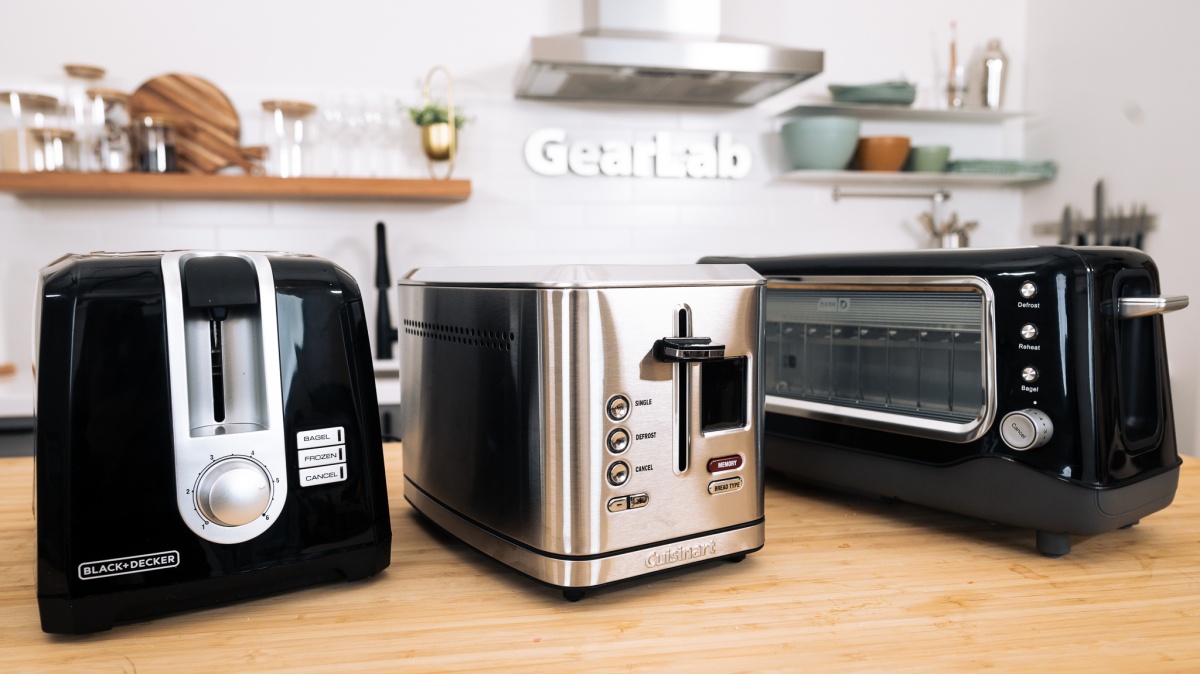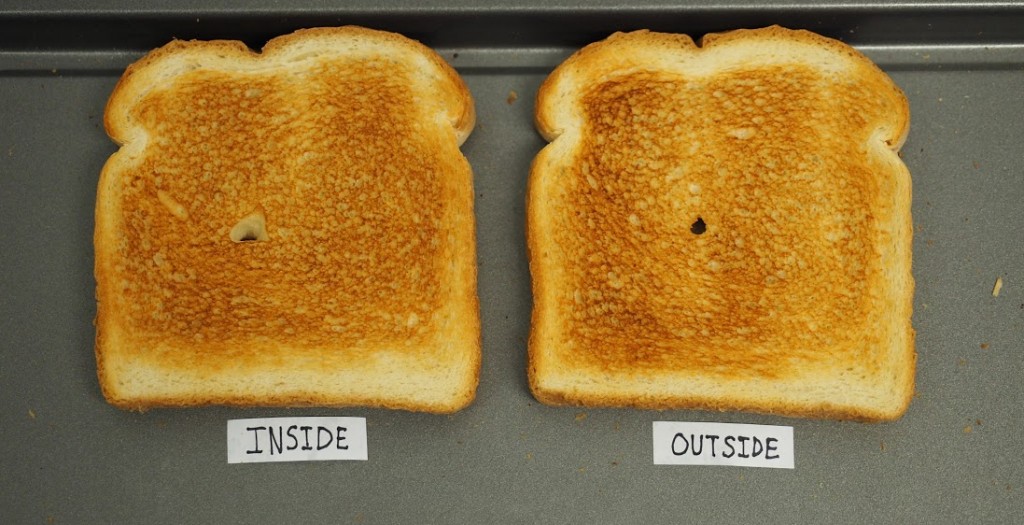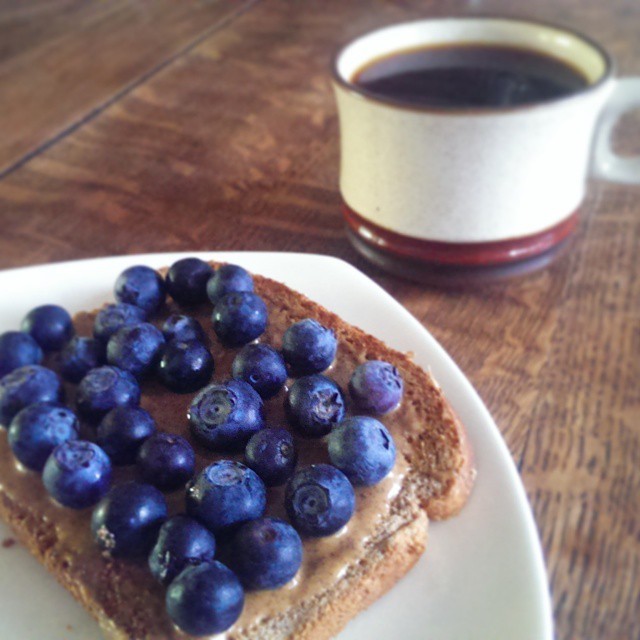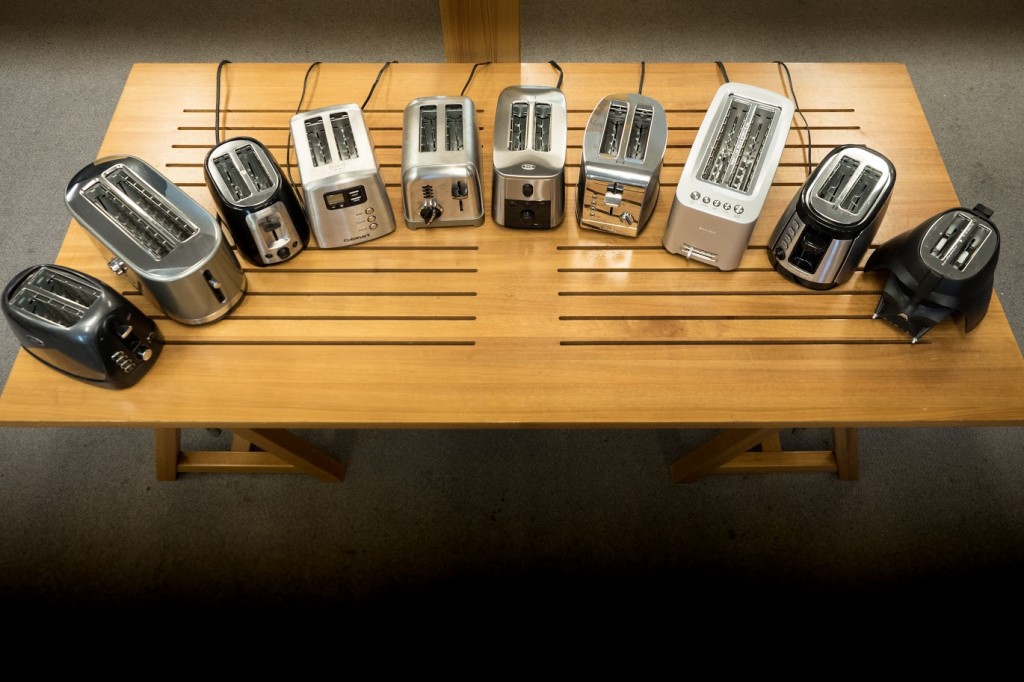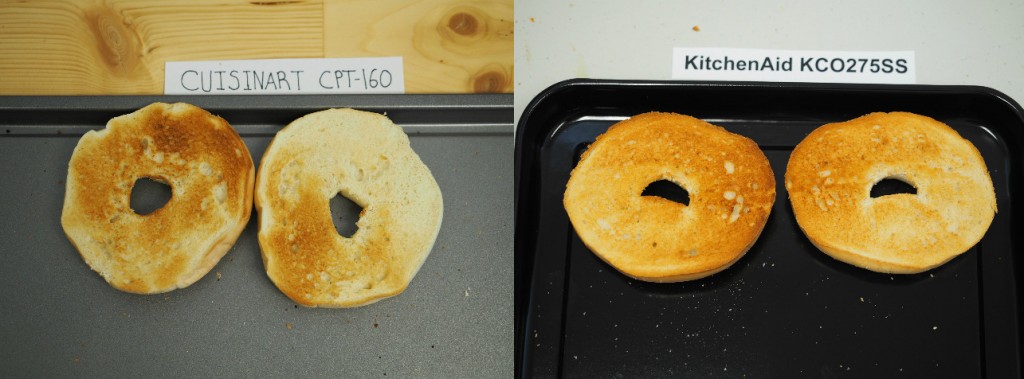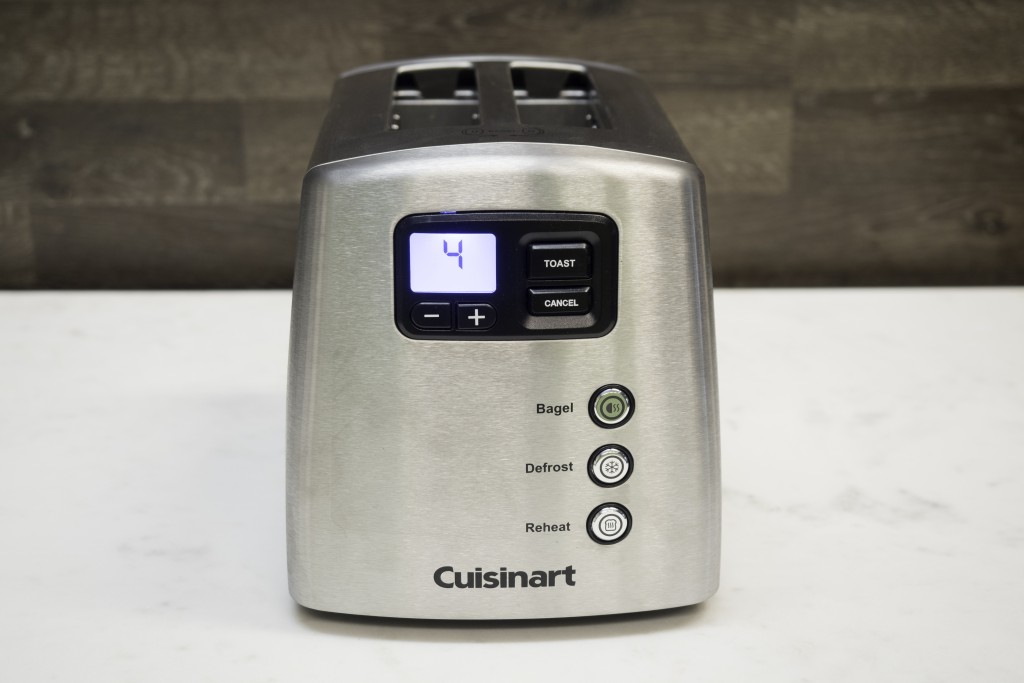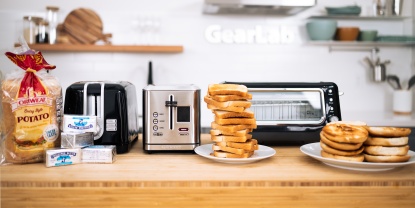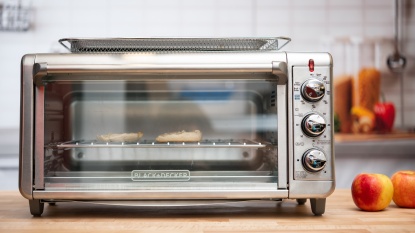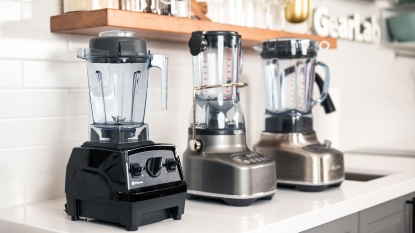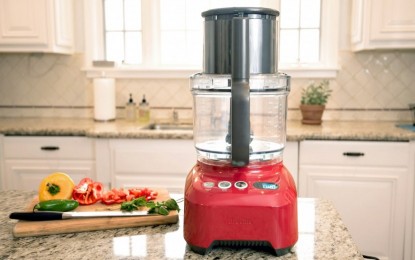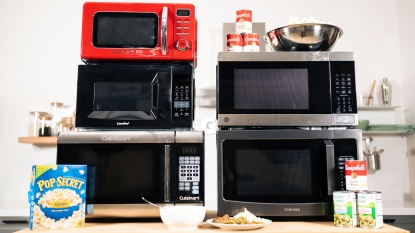How do you choose the right toaster for you? We bought the most popular toasters for our best toaster review, and made multiple lifetimes worth of toast, bagels, and frozen waffles, all to help you decide which model will best fit your needs.
A toaster is the sentinel of your countertop. It stands a vigilant guard, ready to spring into action at a moment's notice. It can't handle the greater tasks of your major appliances, but it is never dormant. It shines in those hectic minutes before work when you need the comfort of a warm breakfast but don't have the time to fire up the stove. It's worth making sure you choose the right toaster to accompany you in your morning battles for nourishment. Below we've compiled all the toasting lessons we learned in our extensive testing process into important factors to consider and a step-by-step decision guide to help you do just that.
The Perfect Piece of Toast
Just as their inherent modestness has not shielded toasters from the forward march of technological advancement, toast's status as a breakfast staple has not made it immune to intense scientific scrutiny. In a rigorous study that involved making more than 2000 slices of toast, British researchers determined that the perfect piece of toast is 12 times crispier on its surface than at its center. This gives the perfect feeling of biting through a crisp exterior to a softer but not gooey center and lends that pleasant audible crunch that plain bread just lacks.
Are You a Fan, or are You a Connoisseur?
Not everyone is going to care about chasing that perfect 12:1 ratio of crispiness. Some people really love their toast, obsess over getting the perfect shade of brown, and are ecstatic that toast has suddenly become a phenomenon. These are the connoisseurs. If you've ever Instagrammed a photo of some toast topped with sliced avocado and sprinkled with fresh ground pepper, you probably belong in this category. Others may simply enjoy a piece of toast in the morning as a quick breakfast or think that toasted bread can elevate the quality of their sandwiches, but don't fuss too much over toasting the perfect slice. To these people, as long as it's not burnt to a crisp, toast is toast, and they like toast. These are the fans. If you clicked on the above link and were surprised to find that there is such thing as a toast restaurant, then you probably belong in this latter category.
As mentioned before, the basic design of these devices has barely changed since their inception. If you go to your local appliance store and look into the slots of a number of different models you'll see a pretty much identical set of heating filaments in everyone. Considering this, it makes sense that during our testing we found every model was capable of producing a decent piece of toast. There were certainly models that produced better toast, and some that had some issues in their toasting performance, but we didn't find a single model that couldn't reliably produce a decent and edible slice.
Disappointing Bagels (Unless You Spend a Lot)
A perfectly toasted bagel is a thing of beauty. On the cut side, you've got a crispy field of golden brown, just hot enough to melt some butter or warm up some cream cheese, while the other side stays moist and chewy. This juxtaposition of crunch and doughiness sets off a flavor explosion in your mouth that can bring rays of sun to even the dreariest of mornings. To achieve this perfect balance most models have a bagel setting, which dampens or completely shuts off one element in order to toast the cut side more.
Bagels present another challenge beyond their preferred asymmetric toasting; they are almost never evenly sliced. You've probably experienced the frustration of slowly, carefully, trying to slice a bagel right down the middle only to have your knife blade inexplicably veer off to the side on the very last bit. In fact, emergency rooms see increased visitation on Saturday and Sunday mornings, partially due to injured and frustrated bagel slicers.
Even taking these additional difficulties into consideration we were generally unimpressed by the bagels made during our testing. The one exception was the Smeg 2-slice, which made absolutely incredible bagels. It is also quite expensive at $150. The KRUPS Breakfast Set is quite a bit cheaper and made reasonable bagels, not as good as even a mediocre toaster oven would make.
Capacity and Toasting Quality
All of the models we tested have two slots. Generally, this means they can toast two slices of bread. Two of the models we tested have long slots (the Breville Die-Cast 4-Slice Long Slot and the KitchenAid 4-Slice Long Slot with High Lift Lever) that can accommodate two slices of toast each, for a total of four. Almost all of the other models are available in a four-slot model as well.
4-slot models offer increased capacity and thus can churn out toast more quickly, but they tend to toast more unevenly than standard 2-slot models. This is due to their larger size creating more thermodynamic deviations. Again, they can still produce good toast, just not great toast. So if toasting quality is your main concern you'll want to steer clear of 4-slot models, but if you're less picky about toast quality and want the larger capacity a 4-slotmodel is just the ticket.
To Lever or Not to Lever?
One of the most noticeable, and possibly most disorienting, changes in toaster design has been the addition of leverless technology. Leverless models don't have the familiar push-down handle that lowers toast into the heating chamber. Instead, at the push of a button, an electric motor slowly lowers the toast and engages the toasting cage. While this technology brought up sentimental images of Han Solo being lowered into the carbonite freezing cell, our testers were initially somewhat put off. This is most likely a common reaction as adding all of those moving parts seems like an unnecessary complication to what is quite a simple process.
However, this technology did eventually endear itself to us. It allows for some nice features that levers just can't offer. The Breville Die-Cast includes a 'lift to look' function. At the push of a button the toast quickly rises up to let you peek at how done it is, and then quickly lowers back down again, all without interrupting the cycle. Doing the same thing in a levered model would require completely canceling the cycle to take a look, and then having to adjust the settings to make sure you don't burn the toast on the second go around. We also didn't experience many complications arising from this additional technology. There was a single incident where a pop-tart got caught and the motor slowly turned it into an accordion as we watched helplessly from the sidelines. However, try as we might we were not able to recreate this catastrophe.
Also, without the lever, you can't push the toast up that extra half-inch to grab it, but this is really only an issue for particularly short items, and we had no problems getting even small English muffins out of these models. So if you've found a leverless model that fits all of your needs but you're slightly wary of the seemingly extraneous technology, we don't see any harm in your embracing the future. Tony Stark would be proud.
Types of Toasters
Traditional
In this review, we solely tested traditional models. These toasters utilize the classic slot design and specialize in toasting flat items like bread slices and frozen waffles.
Toaster Ovens
Toaster ovens occupy a mid-range, both in function and in price, between traditional toasters and conventional ovens. They can make decent toast, but not quite as well or as quickly as traditional models. They can handle most of the baking, broiling, and roasting duties of a larger conventional oven, but can't fit as much inside. One area where they really shine is bagels. Their broiling and/or bagel functions can reach coffeehouse level perfection and far outstrip those made by most traditional models The Smeg being the exception). If you tend to cook smaller meals in your oven and want a more convenient and energy-efficient device, or want some fantastic bagels, check out our best toaster oven review.
Choosing the Right Toaster
Step 1: Does toasting quality matter to you?
The first decision to make in your quest for a new toaster is whether or not toasting quality is important to you. In the world of wine, there are connoisseurs that can identify a bottle's town of origin from just a sniff, and there are those that can not tell the difference between a $5 bottle and a $500 bottle. In the toast world, there are those that are constantly chasing that perfect slice while others divide toast into just two categories; good and burnt.
If you're part of the former camp and take toast quality seriously, then that simplifies the process. You'll want to make your decision almost exclusively based on bread toasting performance. This means opting for a two-slot model over a four slot. The highest performer in our testing was the Editors' Choice Award-winning Smeg 2-Slice. Also, our testing indicated that defrosting quality is strongly correlated with bread toasting quality.
Step 2: Consider if You Would be Better off with a Toaster Oven
Toaster Ovens offer a number of advantages and disadvantages in relation to traditional toasters. For some people that are in the market for a new toaster, a toaster oven may actually be a better decision. But first the bad: toaster ovens vary widely in price, tend to be more expensive than their traditional counterparts, and they take up more counter space. They also don't toast bread quite as well and take a bit longer to do so. Most traditional models will make a medium piece of toast in just under 2 minutes, while most toaster ovens will take 5 minutes or more. This may not seem like a huge difference, but for those who have their morning routines really dialed in those extra few minutes could be quite a bother.
Now for the good. Toaster ovens make incredible bagels. In this category, they blow most traditional models out of the water (though the expensive Smeg 2-Slice made the best bagels we've ever seen). If bagels are your breakfast staple you'll want to seriously consider a toaster oven. They also can effectively act as small ovens, and because of their smaller size, they heat up much faster than a conventional oven. For singles or couples who most often don't need the extra capacity of a conventional oven, this can translate into significant time and energy savings. Toaster ovens can't match the speed of microwave ovens, but they can reheat food without the annoying sogginess that is pervasive in microwaves.
So if you're a bagel meister, don't' mind some sacrifices in bread toasting quality and speed, are willing to part with a little extra cash and counter real estate, and like the sound of having a more versatile appliance, you may actually be in the market for a new toaster oven. If that is the case, check out our best toaster ovens.
Step 3: Consider Ease of Use
If you've made it to this step you've decided you don't need a toaster oven, and that toasting quality is not your main concern and thus not the primary driver of your decision making. For the majority of people that fall into this category ease of use will be the most important differentiating factor between models. An easy-to-use model will lead to much fewer morning frustrations and more enjoyable breakfasts.
Ease of use is mainly determined by the controls. It can be quite annoying if the entire unit slides around when you're trying to push buttons, so you'll want a model with rubber feet or enough mass to keep that from happening. Most models have some sort of control feedback, namely small LEDs that light up when you push a button, letting you know your command has been recognized. Surprisingly, some models don't have this feature, requiring you to have faith that bagel mode has actually been engaged. Some models have countdown timers or readouts that give you an idea of when your toast will be done. We prefer shade dials that click into each setting or give some sort of readout indicating what shade level you're in, as this allows you to dial in the same setting repeatedly without any guesswork.
You'll also want to consider the ease of cleaning. Every model we tested has a crumb tray, but they were not created equally. We preferred trays that we could easily remove with a single hand, and removed from the front so you didn't have to move the entire unit to empty the crumbs.
The Smeg 2-Slice and the Breville Die-Cast led the field in our ease of use testing. It has intuitive controls that are inherently easy to use. Apart from this standout, most of the models we tested earned mediocre scores in our ease of use testing.
Step 4: One Last Consideration for Parents
Obviously, toasters get hot, that's sort of the point, and the top of any model is going to be piping after a cycle. However, the bodies of some models are better at containing heat than others. The die-cast construction of the Breville made its body still cool to the touch, even after running multiple cycles. For those with little ones, the extra cost may be worth the peace of mind that curious hands reaching onto the counter won't get burned. We also suggest that parents avoid the Cuisinart CPT-420, the Hamilton Beach Keep Warm, and the KRUPS Breakfast Set, as we found that the bodies of these models can get quite hot.
Conclusion
When purchasing a toaster there isn't such thing as a bad choice, but there is such thing as a better choice. The functional elements of all models are incredibly similar, meaning they will all produce a decent slice of toast. However, small differences in toasting quality between models can be meaningful to toast aficionados, and careful consideration of features and usability can improve the experience of any morning toastmaster. This article can help you get the most for your money by helping you find the perfect model for your needs, rather than settling for an acceptable one.

